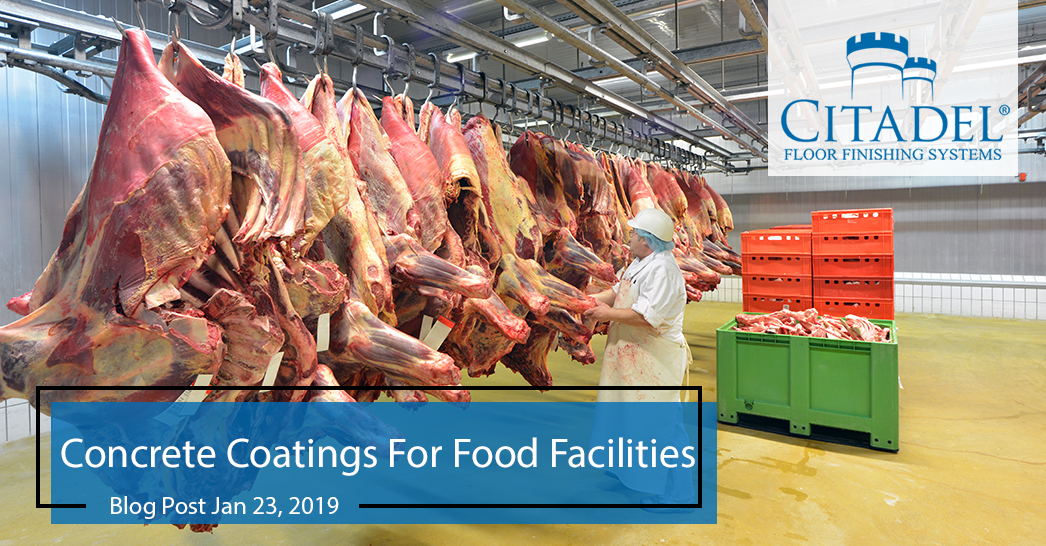The Butcher, the Baker... Recommended Concrete Coating Practices for Messy, Greasy Food Prep Facilities

2019-01-23
With the holidays just behind us, odds are that at least one of those celebratory meals featured a roast turkey, ham or other family favorite. If you or a loved one had anything to do with its making, you're familiar with the mess and grease that are part and parcel of preparing and cooking meat.
Now, multiply your mess and cleanup by a hundred… or a thousand… And imagine doing that every day for 60 years.
For a Northern Californian butcher shop, that was exactly what was happening. Successfully working with hunters to prepare their game meant constant cleanup of a variety of animal fats—mainly elk, deer, and pigs.
Challenge #1: The original floor was in rough condition.
"The whole cap of the concrete was falling apart," said Terry Keener, the contractor brought in to coat a floor that was in dire need of a makeover. "The top layer was deteriorating. It was the amount of water [used to clean it], years of wear and tear… [That] concrete had been worked on for 60 or 70 years."
Challenge #2: The completed floor needed to be easily cleaned, anti-slip and bacteria-free.
The owners were not going to replace the concrete despite its age, but they knew they had to do something different. They were having a hard time keeping the floors clean and the bacteria out. They needed a floor that could withstand constant cleanup. Additionally, in an environment that is always wet or coated in grease, it was imperative that the floor's safety be improved as well.
Challenge #3: The facility needed to stay open during construction.
The three-person coatings crew worked on the 2,000 square foot floor in two phases. Butchery operations moved onto one half of the floor, while the crew worked on the other half, separated by a construction zone tent. When the crew finished the first half, they swapped sides with the employees in order to finish the second half of the floor.
The installing crew's approach:
- To start, the team profiled the concrete used a scarifier and a diamond grinder to smooth what Keener called the "terrible deteriorated slab."
- Then, they swept and vacuumed up the dust and debris.
- Next, they applied urethane cement, the highly durable and seamless surface of which reduce the need for repairs and maintenance, and broadcast silica sand for maximum anti-slip qualities.
- Finally, they topped the floor off with a layer of 100% solids polyurea, in gray (client's choice).
Urethane cement met the butcher's flooring challenges—and those of other food and beverage facilities as well as industrial applications—on various fronts:
- Contains a silver ion antimicrobial additive to protect the surface from bacteria encroaching.
- Installs with low odor, and is non-toxic, making it ideal for a customer-facing food prep facility that had to stay open during installation.
- Features a positively textured profile with sand aggregate, minimizing slip risks in wet areas.
- Resists temperatures of up to 210?F, allowing it to withstand steam cleaning.
- Allows moisture to move through the material at a safe rate.
Are you bidding on a similar job? Let us help you prepare. Schedule a call with one of our flooring experts to walk you through the best-fit materials and tools for your project.
Latest News
How to Maintain Your Concrete Grinder
Gain Customers and Referrals in 4 Easy Steps
Ready for the Summer Rush? 4 Ways to Prepare
6 Cold Weather Safety Tips for Installers
How to Remove Salt Stains from Concrete
Testimonials
Every time I call I get to talk to someone, and I always have an answer within 20 minutes. That's awesome.
Client: Terry C.

